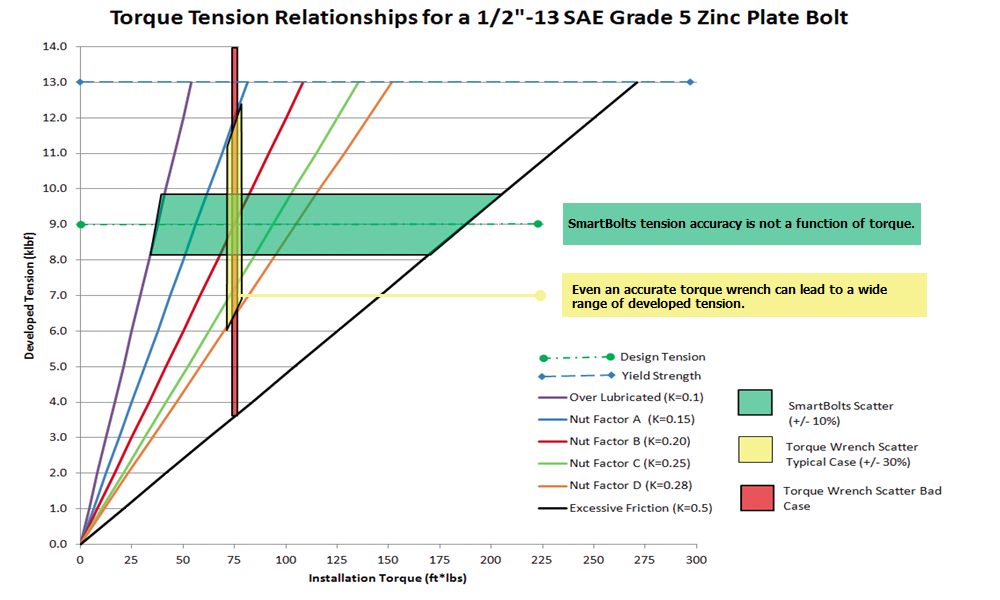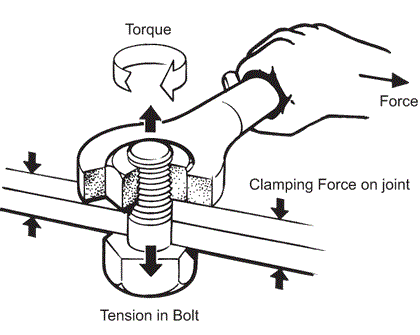1. Contrary to popular belief, torque does not provide bolted joint security.
Properly tightened bolts act like coiled springs to provide clamp force. Regardless of installation method, only clamp force secures a bolted joint. Clamp force is created by bolt tension. Torque does not directly measure clamp force, rather it is a twisting force that results in rotation. Knowing a torque value does not mean that you know the clamp force value, therefore you do not know with certainty your bolted joint is secure.
2. Torque is only a rotational force.
Consider the example of an engine that creates torque to drive your vehicle’s wheels. The higher the torque, the faster the wheels are able to spin. So why can’t we use torque to determine our speed?
The answer is that torque has an indirect relationship to speed. Between the engine and the wheels, there is also a transmission with various gear ratios. If you don’t know what gear you are in, you cannot determine what your speed will be for a given torque input. By itself, torque does not provide enough information to determine vehicle speed.
The same analogy can be applied to bolting. In this case, bolt preload is the “speed” you need to know, and nut factor is what “gear” your transmission is in. To ensure bolted joint security, we need more information than torque can deliver.
3. Torque requires assumptions about the bolted joint environment.
Since torque provides incomplete information, those who depend on it for secure bolting must fill in the blanks with assumed data. In the bolting world, this multiplier is referred to as the “nut factor.”
The nut factor is the weak link of bolting methods that rely on torque measurement. It attempts to group all of the environmental factors that affect how difficult it is to rotate the head or nut of a bolt into a single value. These environmental factors can number into the hundreds.
The result is inaccurate and variable pre-loading of similar bolted joints using similar torque values – the exact opposite result we are looking for to consistently achieve bolted joint security.
4. Bolts respond to the same installation torque differently with repeated usage.
When installing a bolt, the interfaces of the bolted joint components are changed due to relative motion and loading. While this localized deformation does not affect the structural integrity of the bolt, the wear on components does change the resulting bolt tension for a given input torque.
Therefore, a brand new bolt will have a different nut factor than a used bolt. Since torque is only able to measure rotational force, the different friction observed by torque will result in a bolted joint with higher or lower clamp force – even though installation torque has remained the same.
The good news is that all of the uncertainties of relying on torque measurement to secure bolted joints can be avoided. How is that possible? By specifying a bolting system that directly measures bolt tension, such as SmartBolts Visual Indication System™. SmartBolts measure bolt tension only, disregarding all the friction factors that corrupt torque measurement and lead to unreliable bolted joints.


